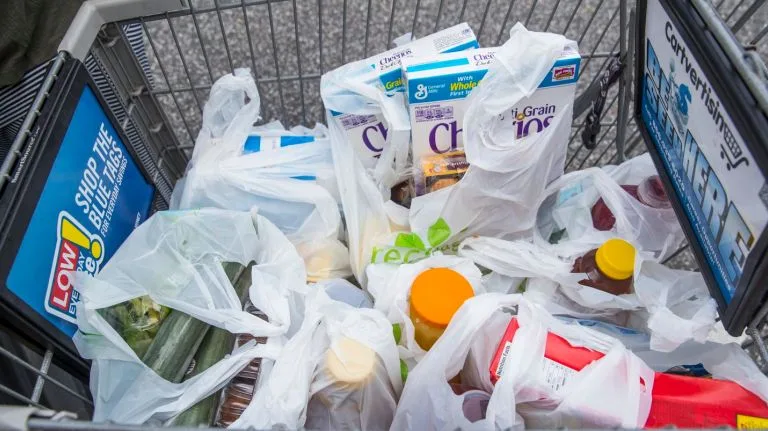Brussels – In 2022, 4.7 billion fewer lightweight plastic bags were consumed than in the previous year. According to Eurostat surveys, 29.8 billion new bags were used in the year, a 14 per cent per capita decrease compared to 2021, corresponding to 66.6 bags per person used in 2022.
Since 2018, the European Statistical Agency has noted a downward trend, which, from over 40 billion, shows that consumption almost halved at the end of the period.
At the country level, there are apparent differences. Compared to the European average, we find Lithuania and Latvia leading. The two countries, in 2022, recorded the highest number of plastic bags made of lightweight material per capita, 249 for Lithuania and 193 for Latvia. The Czech Republic closely follows them with 185 bags per capita.
The best data were recorded by Belgium, with only four bags per person in 2022, Poland with seven, and Portugal with 13. Italy attests an unflattering result, which is almost double the European average, with 122 shoppers per person.
The significant differences depend on the efficiency of implementing measures, which are influenced by economic, social, and political factors. Some countries implemented consumption reduction measures from 2018–2022, while others implemented them over a longer period. The different calculation methods in EU countries also have an impact.
Overall, at the EU level, all countries must commit to reducing consumption as the so-called Plastic Bag Directive requires. By December 31, 2025, the goal for countries would be not to exceed 40 bags per person, which, given the differences, will need a lot of work for countries well above average.
This directive (EU Directive 2015/720) amends previous packaging policy measures. Focusing on reducing the use of lightweight plastic bags (i.e., less than 50 microns thick) would go a long way toward contributing to the fact that they are one of the top ten wastes in Europe.
Moreover, this type of packaging tends to be used only once but takes centuries to degrade fully in the natural environment. Before that happens, they are often ingested by land or marine animals or break down into microplastics. Either way, they end up in the human and animal food chain.
English version by the Translation Service of Withub





